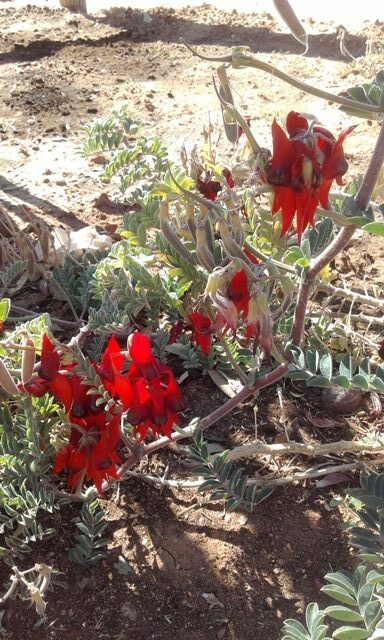
Nature’s credibility for success –
Cooperation is sustainable
Whales were not saved by an understanding of population thresholds. Once their blubber was discovered to distill into an efficient fuel oil they were hunted to near extinction in a single generation. Whale blubber for oil was replaced by the petroleum industry and vegetable oil substitutes. Forests are not preserved for their diversity. They are saved when the cost of extraction outweighs the immediate financial gain. When the red cedar or the huon pines are gone from the forests, distance and remoteness are their best ally. Similarly fish stocks are not being managed for future availability; we are caging them in floating farms on the oceans or inland ponds.

The notion of limits is a dare to humans. It comes down to ideology. Is the earth our mine site? Or, is it our home? Will we discover nature’s secrets and exploit them at the expense of other species and their habitat? On seeing vultures gliding in flight, the Wright brothers were inspired to invent the mechanical wing. Flying machines were soon adapted to another devastating war machine. Will we see the natural environment as our mentor? A self sustaining system to be protected, to learn from and emulate.
Do we have the intelligence, humility and compassion to work with nature? A ten year old Swedish girl, Greta Thunberg has taken a leading stand to publicize the need for action to reduce climate change. A pity the repeal in October 2017 of the Clean Power Plan in the US, or in September 2018, the Climate Risk Disclosure Act, or in July 29, 2019, the introduction of the Climate Equity Act, a bill that proposed to protect the health and economic well-being of all Americans for generations to come, attracted so little publicity.
The Earth is its own food resource
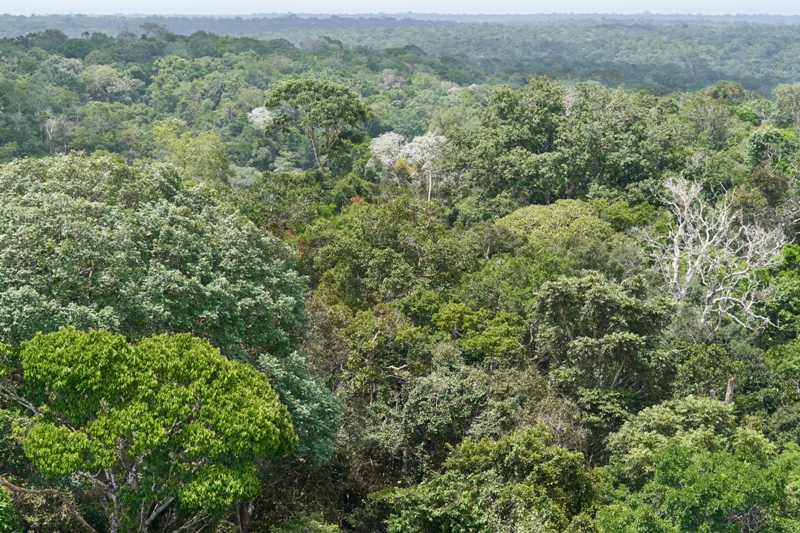
Nature runs on sunlight and uses all its waste. So if we and this planet are to continue to flourish, questions arise.
- How do we grow our food?
- What do we grow?
- How should we make our materials?
- How should we power our lives?
- How should we heal ourselves?
- How should we conduct business?
The industrialization of agriculture has seen an end to diversity. Vast monocultures of sugarcane, rice, macadamias consume the landscape. Crop growers sow broad acreages with single variety species, all at the same stage of growth. When a crop fails the loses are disabling. The eternal optimists, farmers are at risk from pests, parasitic species and disease, winds, erosion, drought, fire, rain, hail and flood.
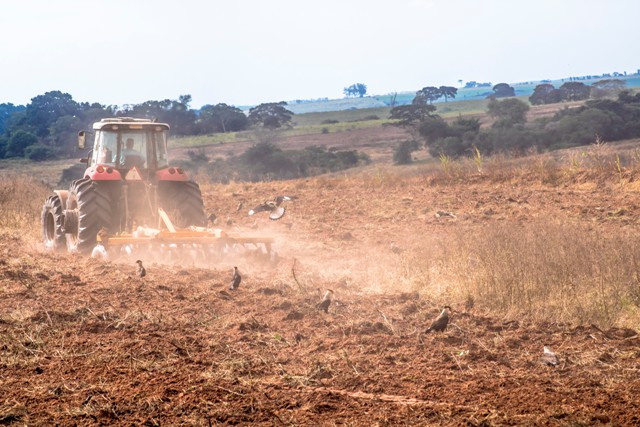
A number of farmers in the prairie lands are maintaining the native vegetation. They are finding the native grasslands are resistant to erosion because the perennial grasses are deep rooted. Pest infestation damage is short lived because the numerous plant species are able to contend with the pests’ preferences. And the grasses do not require artificial chemicals for protection or nutrition; they do need sun and some rain. But they are less reliant than annual crops for water in their growth cycle.
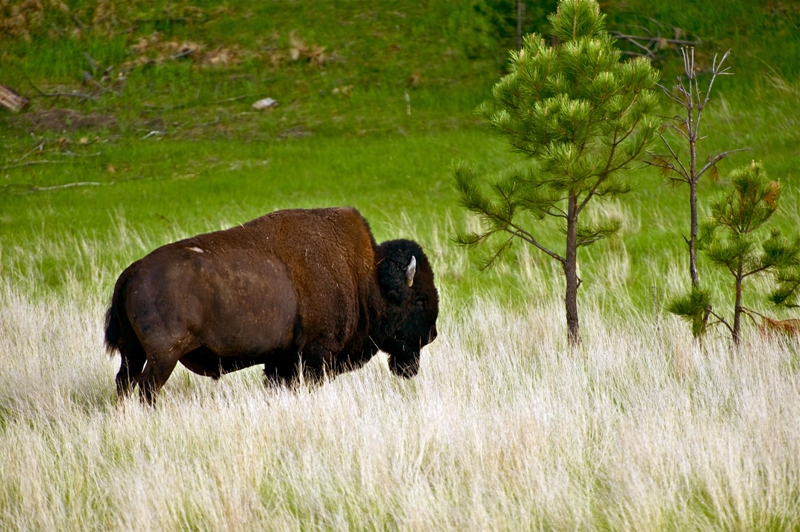
No need for cultivation, seeding or fertilization on the prairies. In fact they mulch their own waste discarded dead fiber. The grasslands’ own genetic modification occurs on site from year to year. If agriculture co-existed with the native habitat then it would depend on where you are.
Here in north eastern New South Wales just nestled below the Border Ranges that sees the warm air of Queensland meet the cool wet south easterlies of coastal Australia an average rainfall of sixty inches a year, sub-tropical rain-forest would soon (in one generation) re-establish itself after the historic falling of the red cedar, followed by clearing for cattle. Now replaced by a mono-culture of macadamia plantations. Managers clear all vegetable matter from their manicured plantation rows to allow the nuts to be mechanically gathered from the ground. Considerable energy is then expended removing the dehiscent husk to reveal the nut shell, the hardest seed coating known to dietary science. This and a combination of processing drives to cost the consumer eight times that of its harvested value.
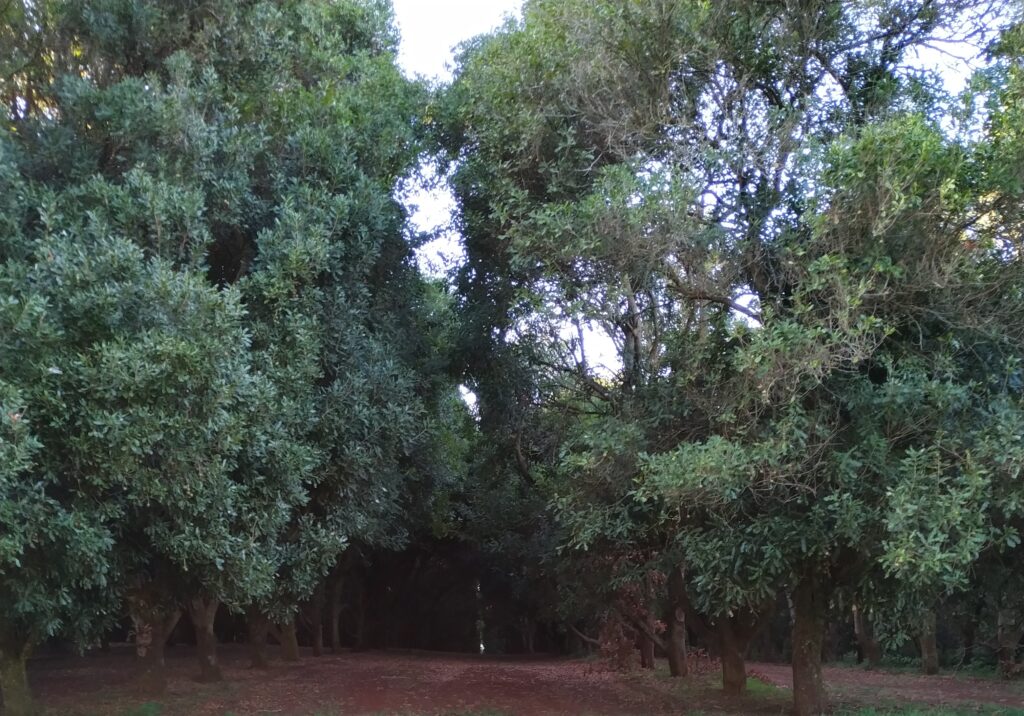
Others would consider grassed plains as their native habitat or dry woodland. Not to forget vast areas of shrub dotted desert.

Lazar leveled fields to assist the mechanical tilling, watering and harvesting by massive diesel powered vehicles may well see the ‘Dust Bowl’ of the Mid West of the 1930’s drought revisit. Then cows used the soil dunes to walk over fences. And what the wind took never came back like a tidal sand might deposit. In the Southern hemisphere New Zealand’s Alps sometimes wear a pink coating of Australian top soil blown across the Tasman Sea. It takes three hours to fly the colloquial ‘ditch’.
Sustaining us today
Planting crops commenced 10,000 years ago, break open the top soil, rake over the bed for seed, nurture to green shoots and think life is wonderful when you got the fruit. Some certainty developed in human life. Crops grew every year. Our children had a regular food supply and did not rely on the chance and gamble of the hunt and forage. Then we had more babies and we needed more grain. More of everything we came to expect, food variety, clothing, shelter, beasts to do our labor and transport. We needed surplus to sell and pay for imported luxuries.
Crops became vital, we gave them every advantage, removed competing plants, lavished fertilizers, killed any threatening pest, and selected the best producing crop variety. In doing so we removed their resilience and genetic diversity to enable the species to adapt to changes in their environment. Top soil is extremely difficult to replace once it is lost. I have heard it said that top one inch of your soil took one hundred years to establish in a forest. Tilling the top soil radically disturbs the soil structure inhabited by micro flora and micro fauna that glues it into colloidal communities. A structure that is the circulatory system for the earth, delivering nitrogen with rain. An arrangement of soil particles that clump and create passage for water and air to come and go. Providing spaces and passage ways for water, gases, nutrients, roots and the vast populations of organisms that convert matter into solution.
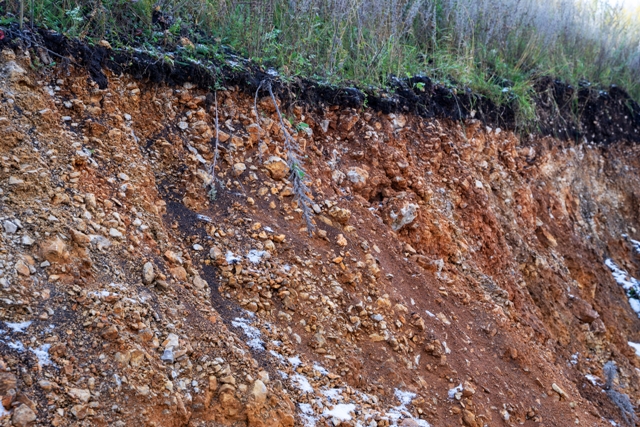
Dry air blowing across the ground pulls moisture out of it. Powder dry soil becomes air borne dust, blown away. If rain does fall the drainage filigree is not there to direct the water to roots. It sheets and floats in rivulets carrying soil to the flood plains, rivers and the sea. The soil is neither moist nor capable of fertility. Fungi cannot assist roots, organisms cannot break down decayed material into nutrients, bacteria cannot deliver nitrogen to the roots of plants.
The ‘dust bowl’ of the Mid West plains of the 1930’s was a tradegy. Washington D.C. responded by setting up the Soil Conservation Service which oversaw the planting of perennial deep rooted grasses, but have we learned? Soil loss from industrialization of cropping is only one in a great list of faux pars committed on the colonial landscape by a European vision of what agriculture should be. The introduction of inappropriate seed crops; rice with its over reliance on water, and sugar cane heavily in need of artificial fertilizers. And into the second decade of the 21st century cane farmers still think it is acceptable to set light to the landscape to burn the trash, unwanted outer leaves because it interferes with production process to create refined sugar. No wonder at the high incidence of diabetes in Western society.
Introduced species, rats, rabbits, hoofed beasts including deer damage the soil surface and destroy ripperian zones on creek banks. One property owner wiped out a local platypus (Ornithorhynchus anatinus) population just in case one of his cows broke a leg in one of the semi-aquatic monotreme’s burrows on the creek banks in his property. Worthy of placing on our coinage but not in our back yard. The Sydney Museum has a full length fur coat made from the pelts of platypus to remind us. Discarded dogs and cats create havoc among native species endangering further their survival. Camels, the jury is still out conferring on their legacy. Central Australian entrepreneurs export them to Arabia.
We have had the industrial revolution, now we have what a clever marketing executive has named the ‘green revolution’, bringing hybrid strains of plants that will ‘dramatically improve yield’. Save a portion of last year’s seed for sowing? Why? The new highly productive seed is much better. Except it is infertile and you will need to buy it every season. Thousands of varieties that naturally adapt season by season to local climatic conditions were discarded for one ‘super yield’ hybrid.
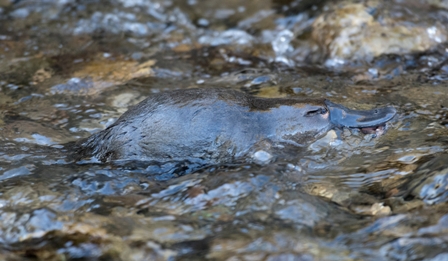
Chemical protection
Pests and weeds in a field of a single variety will need pesticides and herbicides. Unfortunately they do not kill all pests nor all weeds. Some survive to infiltrate next year’s crop. Stronger doses of poison are applied on our crops and landscape. One supplier is offering pesticide pre-treated seed at a cost. Dozens of seed supply businesses have been bought out by petro-chemical companies.
Machines have replaced labor but farms have incurred considerable debt to fund them. The constant pressure of repayments on loans forced farmers into broad acre agri-business; lazar leveled fields for the super cultivators, one species for efficiency, and continuous cropping with high fertilizing additives adding more expenditure. No switching to replenish soils with legumes. Chemical fertilizer is the quick fix to treat the symptom, instead of treating the disease of soil degradation.
The petro-chemical companies provide a protective ring to ensure a high yield. The spraying of herbicide and pesticide escalates. Now glyphosate1 can be detected in every commercial food2. Farmers were lead to believe hybrid seeds immune to herbicide; no more concern over residual herbicide in the soil. They can use as much as they want. Health implications arise, carcinogenic probably.
The net result of all this specialization is fewer and fewer people on the land; less vision, less observation, less intellect, less creativity directed at farming. As well as biological monoculture the rural landscape has little diversity in thought.
Wes Jackson director of the Land Institute works at ‘devising agriculture that is more resilient to human folly’. Modern agriculture is totally independent of the natural systems and habitat. The domesticated animals in feed lots were once wild. Their eco-systems were fuelled by sun light. They promoted their own fertility when seasonal conditions were favorable. Pests they learned to cope with strategic behavior or grew resilient.
Ben Smith geneticist at Nth. Carolina State voiced, ‘We need wilderness as a standard against which to judge our agricultural practices.’ A single native patch of Kansas prairie had 231 species4; grasses, sunflower, legumes, fern like forms, nitrogen fixers, deep rooted, shallow rooted, quick growers in spring, pest resistant, beneficial insect attractors, butterflies, and bees to pollinate. Below ground level thousands of species; ants, centipedes, soil bugs, worms, bacteria and molds burrowing, eating, excreting, depositing nutrients in the humus matrix available for root absorption.
Below ground level is entwined with plants and above ground with animals. Plant a new species or introduce a new animal the earth community responds to that change. It will adapt, but catastrophic change, living systems will stop functioning.
When you plow, spray pesticides and harvest you change a great deal. Beneficial micro-organisms that help deter insects or assist in pollination or root development are all gone. ‘Our goal at the land Institute is to design a domestic plant community that behaves like a prairie, but that is predictable enough in terms of seed yield to be feasible for agriculture,’ says ecologist Jon Piper. Almost all plant species are perennial; their roots remain to hold the soil together in wind and rain. The diversity of natural pastures has many species, some as summer grasses, some as nitrogen fixing legumes. Different species flourish in differing conditions.

Yucca elephantipes closely related to Yucca aloifolia and gloriosa.6 Similar to the Joshua Tree (Yucca brevifolia) the largest of the species.
The Mid West prairie has yucca3 which does well in the dry and the big Bluestem goes skyward in the wet. Pests will target a preferred species, but when confronted with many species they will have more difficulty multiplying their populations. The prairie has four classic plant types; warm season grass, cool season grass, legumes and composites. Cool season is generally early spring flowering with seed setting and blowing off by spring’s end. The warm season grasses flourish through mid summer. The legumes like; oats, claw, sensitive brier and lead plant fix nitrogen which benefits all of the plants. Composites like golden rod, compass and asters can flower any time throughout the season.
Studies of assembled plant communities suggest that in order to sustain themselves persistently they need no fewer than eight species. Land Institute scientists under the direction of Wes Jackson are looking for perennials that may be encouraged to yield food crops.
Method one chooses a wild perennial and enhance its seed production. Method two, take a crop bearing annual and cross it with a perennial that copes with winter conditions in nature. Look for good rhizome development – the underground runner that allows plants to store starch for the dark season.
Likely candidates like
- Illinois bundleflower (Desmanthus illinoensis) a perennial that has produced seed consistently at 800lbs per acre, its tall seed pods are attractive to deer and quail.
- Eastern gamagrass (Tripsacum dactyloides) a warm season grass, related to corn.
- Mammoth wildrye (Leymus racemosus) a cool season relative of wheat.
- Maximilan sunflower (Helienthus maximilianii) a composite with oily seed.
- Johnsongrass (Sorghum halepense), is a perennial in the grass (Poaceae ) family, native to the Mediterranean region.
- Grain sorghum (Sorghum bicolor), also known as great millet, durra, jowari, or milo, is a grass species cultivated for its grain, used human consumption, animal feed, and ethanol production. Sorghum originated in Africa, and is now cultivated widely. S. bicolor is typically an annual, but some cultivars are perennial. It grows in clumps that may reach over 4 m high. The grain is small, ranging from 2 to 4 mm in diameter.
- Wild senna (Cassia hebecarpa) a lugume that forms seed pods which will attract turkeys.
Most cropping is conducted with exotic species or their hybrids from Europe or Mexico. American native species cultivated are sunflowers, cranberries, blueberries, pecans, concord grapes and Jerusalem artichokes.
James Drake and Stuart Pimm of the Uni. Of Tennessee have studied plant communities and analyze what is necessary for these assembled plants to live in equilibrium. They have come to a hypothesis that it is all about history. The community needs to have evolved, some arrivals grow, some die out. Animal involvement needs time to reach a state where change can be survived by some suffering but others flourishing.
Plants in these communities are not competing for the same things as an identical plant would have to. And they are better situated to resist insect and disease attack. Insects are presented with a diverse array of foliage and chemical strategies to fend them off in a poly-culture. Where as in a monoculture, once the insect discovers its attractive sweet parts it spends all its opportunities consuming. Diseases are more complex and finding a host is not as easy.5 Where legumes are present in the assembly the tiny nodes on the roots convert airborne nitrogen into plant food for themselves and others nearby.
Locations differ in their ecosystems so the natural native habitat will differ due to factors like; sunlight cycle, ground conditions, weather patterns, animals and bird life, plant diversity. Permaculture advocate Bill Mollison said, ‘ask not what you can wring from the land, but what the land has to offer.’ Bioneers John and Nancy Todd founded the Alchemy Institute in 1969 using ‘living spaces and food production systems using nature as a model. The forest-in-succession concept for a self sustaining farm.’ The succession in a forest optimizes the use of;
- space [pioneer plants take root in exposed places],
- biotic elements [microbes, fungi, earth bound insects and worms breakdown humus, leaf litter, animal remains into compounds the plants consider nutritious.]

The jungles of Cost Rica are a bountiful paradise of luxuriant vegetation and sun ripened edible foods. But colonialist cleared them to plant European crops. They did well at first but subsequent tropical deluges leached the nutrients from the soil. From then crops diminished in yield. Botany professor Jack Ewel of the Uni. Of Florida with a colleague Corey Berish cleared two plots in the tropical jungle then let then reseed and naturally regenerate to native jungle. One they left to nature the other they dug up the regrowth and replaced it with a human food variety that had the same physical characteristics as the native. Taking natures’ sprouting as their guide they replaced annual for annual, herbaceous perennial for perennial, tree for tree, vine for vine. The domesticate jungle plot appeared and behaved like its native neighbor. They both displayed fine root systems and identical fertility measurements. The natural habitat of Heliconia paradise plants, annual gourd vines, sweet potato and other Convolvulaceae family plants, legume vines, shrubs, grasses were replaced by plantain, squash varieties, and yams. Subsequent years fast growing fruit and nut trees like Brazil, peach and palms were planted. Two control plots both cleared one planted with rotating crops, both soon lost their fertility because the nutrients were not replaced by leaf and humus decay.
Robert Hart, permaculturalist published guidelines for harvesting systems that would mimic rainforest ecosystems. He included ‘cassava, banana, cacao, rubber, and timber trees like cordial and swietenia. Ultimately his system would have three tiers to function as a rainforest where plenty of leaves and roots shielded the soil from torrents, nutrients were stored in biomass, vegetable matter was recycled into the soil. Use plants that had symbiotic relationships with other inhabitants like fungi. Deep rooted plants used nutrients from different parts of the soil.
In his book Gary Nabhan looks to the Papago and Cocopa peoples of the American South West where rainfall is erratic and seasonal. The patchy vegetation congregates in fanning clusters. By planting in the flooding alluvial fans they avoided the need to irrigate. As well as annuals the Papego also planted succulents, grasses and woody plants for food and fiber. They also left mesquite trees about their sites for their leguminous properties.
Ecological accounting
By isolating the agricultural system and counting all the inputs and outputs you can determine if they will sustain themselves. Firstly the must be able to support farmers and their communities. Secondly you need to measure more than financial units, someone has suggested using kilocalories; you need to tally energy and land resource consumption, and their sustainable replacement. That should account for issues involved with fertilizers, fuel, transportation, health, as well as the obvious chemical contamination, atmospheric contamination and their costs to the wider community.
Further Reading
Robert Hart, British permaculturalist, Forest Gardening: Cultivating an Edible Landscape
Ronald L. Myers and John J. Ewel, Ecosystems of Florida
Wes Jackson, Alters of Unknown Stone: Science and the Earth.
Alfred Howard, An Agricultural Testament
J. Russel Smith, Tree Crops: A permanent Agriculture
Gary P. Nabhan, Gathering the Desert. Rodale Press, Organic Gardening Magazine, New Farm, and Preservation.
Related topics: Carbon Sequestration – designfromnature
Referenced footnotes
Ref 1: https://en.wikipedia.org/wiki/Glyphosate IUPAC name: N-phosphonomethyl glycine
Ref 2: http://anh-usa.org/glyphosate-breakfast-report/#_ftn9
Ref 3: https://en.wikipedia.org/wiki/Yucca
Ref 4: Janine Benyus. Biomimcry
Ref 5: Jeremy Burdon, ecologist, conducted one hundred studies of paired plant communities.
Ref 6: http://tropical.theferns.info/viewtropical.php
Edible Uses: Fruit – raw or cooked. A thick, succulent mass of
bitter-sweet juicy flesh. The fruit is up to 10 cm long and 4cm wide.
Flowers – raw or cooked. Eaten as a vegetable. They are delicious raw, or can
be dried, crushed and used as a flavouring. A crisp texture.
Flowering stem – peeled and boiled. Used like asparagus.
Medicinal The fruit is purgative.The boiled and mashed root, mixed with
oil, has been used as a salve in the treatment of various complaints.
The plant is used in the treatment of earache. Ethanolic extracts from the
leaves contain saponins and possess anti-inflammatory activity.

Hi. I’m glad he found designfromnature.com website, I really like it, the article is very useful and I shared it! In order to survive the hard times ahead we found 2 very good books, you can download them here:{links no longer available Ed.}
Great success with this site!